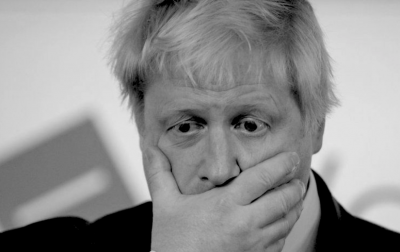UK Government Causes Widespread Confusion with New COVID-19 Guidelines

It was a moment the UK public had been waiting for days, ever since it was reported in several British newspapers that lockdown restrictions were to be lifted from Monday. But although people may be weary after seven weeks of following the government’s ‘Stay At Home’ advice, Prime Minister Boris Johnson did not, as some may have hoped, end the current social distancing rules. Instead, the British people have been asked to continue to stay at home and ‘Stay Alert’.
We’ve heard a great deal about government ‘messaging’ over coronavirus. For weeks now politicians and journalists alike have spoken of how crucial it is that the government gets its messaging right to get the public on side during this pandemic. And yet, far from providing greater clarity on the UK’s future coronavirus response, Boris Johnson’s recorded message aired on Sunday night seems to have caused nothing but confusion. The Twittersphere is full of memes mocking the PM. What does Stay Alert actually mean? And if the lockdown remains in place, then what is the difference between Stay Alert and Stay At Home?
To further aggravate the situation, Scotland, Wales and England are out of sync in their messaging. The leader of the Welsh Nationalists, Adam Price, said Johnson’s advice was ‘confusing and dangerous’. In a tweet he added ‘You cannot stay alert to something you can’t see. There is no clearer and simpler message than #StayAtHome’. A disgruntled First Minister Nicola Sturgeon tweeted earlier on Sunday that she had first heard of the new ‘Stay Alert’ slogan when she read the newspaper headlines, revealing that Boris Johnson had not conferred with her before pressing ahead with his updated message. Then at her daily press conference Sturgeon confirmed that the main message given out in Scotland would remain as ‘Stay At Home’. She said that the government’s advice to allow people to visit their parents at a 2m distance ‘risks lives’ and suggested Boris Johnson should make it clear in his addresses to the nation that he is referring to England, as Scotland may be in a slighter later phase in the outbreak. There are fears that the change to ‘Stay Alert’ may result in the misperception that lockdown is over, and that we may see even more scenes such as those over the holiday weekend when crowds gathered in parks and on beaches.
The ‘muddled messaging’ has provoked some opposition politicians, like Diane Abbott, to question if the government is caving into pressure from the business community to get Britain back to work. The Bank of England said last week that Britain was on track for the worst recession in 300 years and that the economy would be 30% smaller by the end of this year. In fact it’s been reported that the cabinet is divided over how soon restrictions should be lifted, with Chancellor Rishi Sunak and Michael Gove concerned about the economic consequences of a continued lockdown. It is said that Boris Johnson and Health Secretary Matt Hancock (who both incidentally fell victim to Covid-19) are more perturbed by the potential threat of another spike in cases if lockdown is lifted.
What Boris Johnson did manage to convey in his message on Sunday night was, as he put it, a ‘sketch’ of a future ‘roadmap’ of Britain’s return to normality. With graphs and charts he hinted at a future date for reopening shops and schools – June 1st. But with paths between the devolved nations already diverging in their approach to the pandemic, it’s looking increasingly likely that Scotland and Wales may forge their own routes out of lockdown, independent of Westminster. The discord between the different nations on the next phase of the pandemic planning will only boost the Scottish and Welsh nationalist causes. Nicola Sturgeon already sails high above Boris in the opinion polls for her handling of the crisis, with hashtag #movetoscotland gaining traction on Twitter. As I have mentioned previously, Scotland has set itself apart from the rest of the UK by its handling of Covid-19, and does not have the same crippling shortages of Personal Protective Equipment – vital for reducing infection rates in hospitals – as there are south of the border.
How each devolved government handles the crisis in the coming weeks and months will therefore have a long-term impact on independence movements. If, as is arguably already the case, Sturgeon demonstrates superior leadership skills over the crisis, this will only aid the Scottish independence movement. There’s a lot to play for.
*
Note to readers: please click the share buttons above or below. Forward this article to your email lists. Crosspost on your blog site, internet forums. etc.
This article was originally published on InfoBrics.
Johanna Ross is a journalist based in Edinburgh, Scotland.
Featured image is from TruePublica

